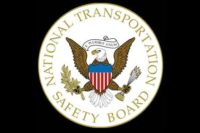The National Transportation Safety Board (NTSB) determined Tuesday that Amtrak’s and CSX Transportation’s failure to properly assess and mitigate the risk of conducting switching operations during a signal suspension, coupled with a CSX conductor’s error, led to the collision of an Amtrak train with a CSX train near Cayce, South Carolina.
In a public meeting held Tuesday, the NTSB said the Feb. 4, 2018 accident occurred when a southbound Amtrak train diverted from the main track through a hand-thrown switch into a storage track and collided head-on with a stationary CSX train. The engineer and conductor of the Amtrak train died as a result of the collision. At least 92 passengers and crewmembers on the Amtrak train were transported to medical facilities.
In the report, the NTSB found Amtrak’s failure to conduct a risk assessment prior to operating during a signal suspension was also causal to the accident. Although Amtrak meets and exceeds FRA’s safety standards to ensure safe operations of its own railroads, Amtrak trains relied only on the minimum federal safety standards when operating on host railroads. Therefore, NTSB reiterates a recommendation stemming from theDuPont, Washington accident investigation and concludes that Amtrak needs to implement a safety management system on all operations whether operating on their own tracks or on a host railroad.
In its probable cause, the NTSB stated that along with CSX Transportation’s failure to properly assess and mitigate risk, the failure of a CSX conductor to realign a switch during the signal suspension led to the collision. The NTSB also said a contributing factor in the accident was the Federal Railroad Administration’s failure to implement effective regulation to mitigate the risk of misaligned switch accidents. The NTSB’s report notes that unless the FRA implements more robust safety interventions, misaligned switch accidents will continue to occur.
“The train crew omitted throwing the switch that one final time, which unfortunately happens far too often,” said NTSB Chairman Robert L. Sumwalt. “If the same error is repeated by many people, the problem is not the individuals’ performance of their duties, rather, the problem is the failure to mitigate the risk associated with the task they are performing,” said Sumwalt. “That’s why the NTSB included CSX Transportation’s failure in the probable cause.”
As a result of the investigation, the NTSB issued three new safety recommendations, two of which were issued to the CSX Transportation. These recommendations address safety issues including actions and responsibilities of the train crew in handling switches. One recommendation issued to all host railroads is to work in partnership with Amtrak to implement a Safety Management System to assess and mitigate risks for operation on host railroads.
In addition, the NTSB reiterated four recommendations to the FRA, and one issued to Amtrak. Two recommendations to the FRA have been reclassified including one urgent safety recommendation calling on the FRA to provide instructions for railroads to follow when signal suspensions are in effect, and a switch has been reported relined for a main track.
An abstract of the final report, which includes the findings, probable cause, and all safety recommendations, is available at https://go.usa.gov/xyfSP.
Links to the accident docket and other publicly released information about this investigation are available at https://go.usa.gov/xyNQj.


